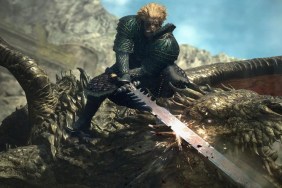Acquire, creators of the Tenchu series, eventually had to sell the license to the legendary stealth franchise. Still wanting to make ninja games combining stealth, action, and strategy, the group needed to create a new IP and thus, Shinobido was born. Though its PS2 and PSP iterations never made it stateside, one can jump into Shinobido 2: Revenge of Zen and enjoy the gameplay and story without a problem. For fans of stealth games who don’t mind a few technical hiccups, I recommend taking that jump.
As the title suggests, players take the role of Zen, who is on a quest for — wait for it — revenge. One works toward this goal by accepting missions from his own ally or one-off contract jobs for any of three warlords locked in battle against each other. Choose carefully, because the story will be affected by which jobs are taken. Mission objectives can include assassination, prisoner liberation, bodyguard duty, kidnapping, delivery of goods, theft, and fending off bears, though the huge majority of them come with the goal of defeating all enemies in the given area. Taking place in a small corner of an island nation, the number of areas is a little bit limited, though they always look beautiful (much more so on the PSV’s OLED screen than in screenshots). Characters and environments are always smooth, colorful when they need to be, yet dark when it fits. Beyond the visuals themselves, the animations are often done very well, especially the ways the dead bodies of Zen’s foes end up falling.
The environments aren’t the only pretty thing in Revenge of Zen, as the game is an audio delight, too. The music always captures the intensity of the moment, usually fading easily into the background, hardly noticeable — perfect for a stealth game. When Zen is spotted, however, the intensity of the music matches the increased heart rate of the player, adding layers to the experience. Sound effects are all done very well to boot.
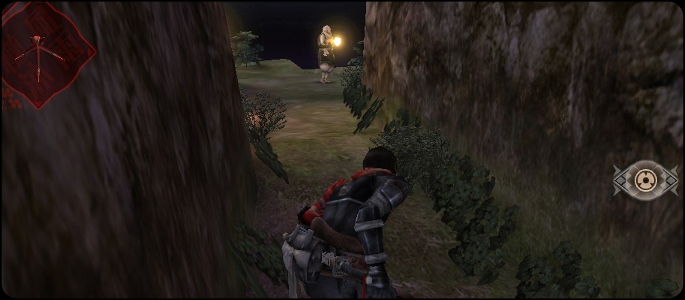
Stealth is essential for success in Shinobido 2, especially after the first few hours when enemies start to toughen up. The value of remaining unseen, enabling Zen (and a later-appearing character) to get behind foes and perform that clutch one-hit kill cannot be understated. Staying hidden and waiting for the perfect moment to strike stays exciting all game long, adding to an already high addiction factor. Players who run head-on into missions just wanting to sword fight everyone will be seeing a lot of Mission Failed screens. Though there are boss battles that require ferocious combat, this is by no means the fix for hack-n-slash addicts.
The character who completes the given quest will get EXP and eventually level up, after which the player chooses how to spend the earned upgrade points. Level grind addicts beware, this game can suck you in. With so many missions, so many ninja tools, and a fully customizable level-up system, it’s easy to lose yourself playing Shinobido 2 and find hours feeling like minutes. The thought of “just one more mission” or “I’ll go to bed after I get one more level up” will be recurring ideas in many play sessions.
Progress is largely up to the player, as one can lean towards missions that will move the story toward a conclusion or opt to continuously do missions for all three warlords. Every mission completed has an impact on future ones. For example, taking a few quests that harm a given group’s food supply will hurt the morale and mindset of that group. In another battle against those guys, their soldiers will be more likely to fall for traps that involve food, like poisoned fish. Lay it in the path of a sentry, watch him consume it with delight, and enjoy your kill. So long as you’re not picking quests that will cause the story to move forward new quests appear seemingly infinite, allowing players to really make their shinobi something amazing.
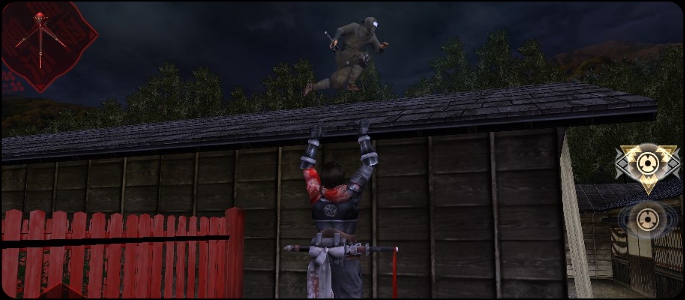
Shinbido has a ton of depth. Even in addition to the pile of available missions, faction playing, and ability to customize Zen’s growth, there’s an alchemy system in place. By gathering items during missions or purchasing them, players can mix all sorts of combos to make some really wicked ninja tools. If it’s not your cup of tea, that’s totally fine, as the game can definitely be played in its entirety without ever getting into the alchemy. Use of these awesome ninja tools can open up new strategies for players and enable different ways of going about achieving Zen’s goals, adding to the replay value and longevity of Shinobido 2.
But Shinobido 2 isn’t all stealth kills and giddy level-up based endorphin releases. At the risk of sounding too blunt, the Artificial Intelligence programming is bad. Someone did a sloppy job with this. Most enemies that see Zen and are even hit right in the face with a shuriken will only pursue him for a few yards before giving up. Some might even stand still and get peppered to death by projectiles. Especially in the game’s first eight hours or so, common enemies can be engaged in a fight against Zen, but then they’ll sit and watch as he runs 20 feet away and hides around a corner. The rate at which enemies drop their guard and go back to being wholly unaware of Zen’s presence is laughable. Imagine getting punched by some punk, then watching him simply duck behind a bush where you can still plainly see him. You’re either going to call for help, run to an entirely different place, or attack that mofo, but the usual scenario in Shinobido 2 would be for you to say “Show yourself!” and stay in the same spot going about your business. They will opt for those other possibilities at times, but it didn’t feel like enough.
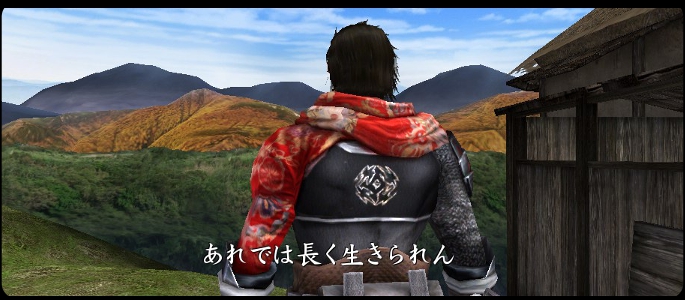
On the upside, rival ninjas have a bit more speed and will pursue Zen longer than the common foot soldiers, and over time, most enemies do gradually get a little more diligent in their pursuits. The good part of this is that it does do a nice job of illustrating the learning curve and difficulty balance, which are very well done. Tutorial missions are done well and serve their purpose without being boring, and all through the game, there will be a good flow of new types of enemies as well as the old ones getting a little stronger, despite not really getting smarter.
The best demonstration of the horrendous AI is in protection missions. Tasked with guarding the life of a VIP, Zen will be expected to aid the character and his/her bodyguards in holding off waves of attackers. Several problems arise, including allies running to nonsensical locations and much more annoyingly, attacking the wrong guy. Ally fighters, including the man/woman being protected, are just as likely to attack Zen or even attack each other. The player might attempt to make life easier for a struggling ally by getting behind the enemy and going for a stealth kill, only to have the move thwarted mid-animation by the flying sword of the very ally he was trying to help. This will not only damage Zen, but it releases the enemy that would have been dead otherwise. Get ready for it to happen all the time in escort missions, and it never gets any less frustrating or surprising when they do it. Allied combatants are just as much of a danger to Zen and his objectives as the enemies in most of these stages.
Incompetent ally AI doesn’t end with stabbing the leader, though. I played a mission that at one point seemed to require the VIP to go up some stairs, but the catch was that she physically couldn’t. I had to get behind her and keep running back and forth until Zen pushed her upwards with some graphic overlap. Until I did, she was walking on an invisible treadmill. See the screenshot. While not dominated by it, the game is littered this stuff, which will turn some players off.
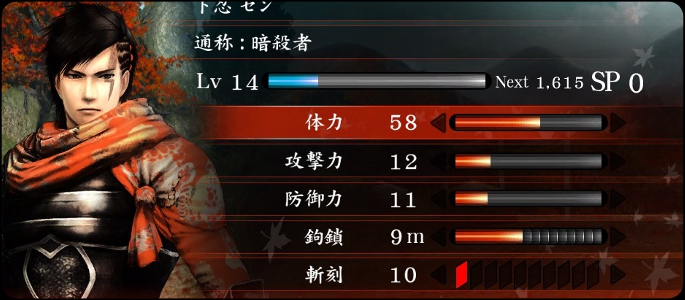
This game relies on buttons exclusively for menu navigation, but during quests, uses Vita’s touch features pretty well. Placing a finger on the rear touch panel will bring up a cursor, then moving it around is how players will aim their grappling hook and anything else they may want to throw, with the launch being done via a manually mapped d-pad button. Things take a lot of getting used to and at times can be imprecise; this in tandem with the occasionally uncooperative camera will frustrate some gamers. The camera is mostly controlled by the player, and while one can swing it around or reset at any time, things can get chaotic in the heat of battle. All the more reason to stay in the shadows, yes, but the amount of time it takes for Shinobido‘s controls to become second nature will draw complaints from some gamers.
Shinobido 2: Revenge of Zen is not a game for mainstream-only gamers. That’s not said with insult or anything, it’s a simple statement that this is not the AAA, huge-budget release with system-pushing graphics and mass market appeal that will sell millions and win awards. It’s just not. What it is, is a fun stealth game with tons of depth, innovative use of Vita tech, and some very interesting systems. If you’re not often the guy in your circle of friends that plays games other people have never heard of, this might not be for you. Shinobido 2 delivers on a level comparable to the Tenchu series in that it’s not the most polished thing in the world, but provides a fun stealth/ninja experience; in the case of this game, better and more addicting than handheld Tenchu titles. It’s not for the main crowd, but Shinobido 2 is a fine game.
PlayStation LifeStyle’s Final Score
+ Looks and sounds fantastic (better than screenshots). – Embarrassingly bad AI; imprecise controls/camera take a lot of getting used to.
|
 |









